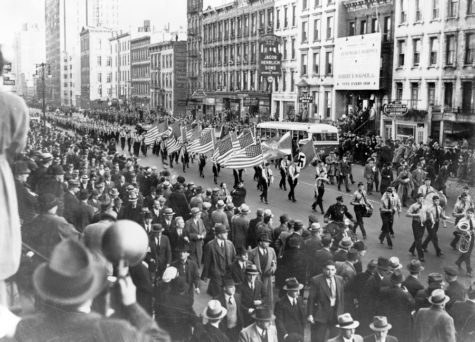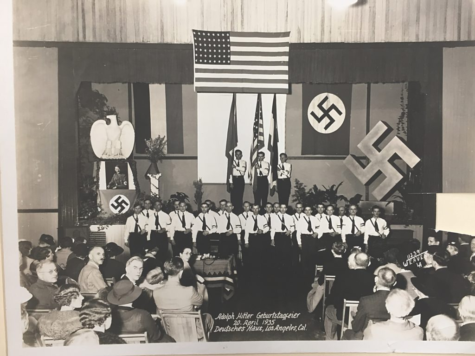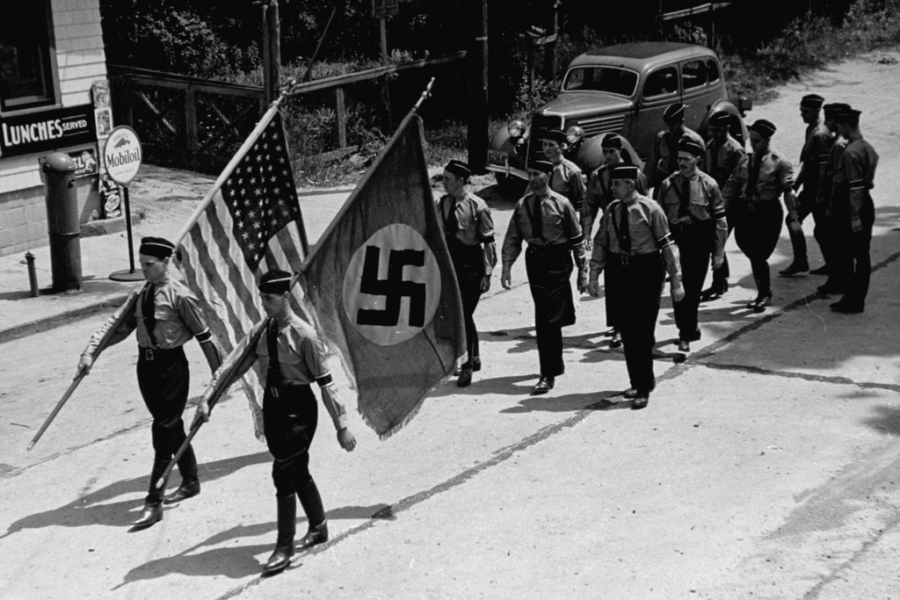The East and The West: How America Influenced Adolf Hitler
October 14, 2021
America will never be known as the greatest country in the world when we refuse to acknowledge our bloody past.
America has a long, long history of white supremacist ideals running rampant in our country. These ideals didn’t go unnoticed by other countries, specifically and, significantly, Germany.
Adolf Hitler and the Nazi party paid close attention to American race law, and devoted a substantial amount of hours debating how they could best implement these laws into their own budding legislation.
The Nazis realized early on that they had something to learn from America, and took great influence from whom they deem as the forerunner of Nazism.
The American Model

During the early 1920s, America was leading the world in racist jurisdiction; because of this, Nazi lawyers looked very closely at, and were ultimately inspired by, American race law.
Nazi Germany was interested in how America was able to create second-class citizenship for its black citizens while preaching equality at the same time.
For the Nazis, America was the classic example of racist legislation; thus, the Nuremberg Laws ended up being the product of many months of Nazi discussion and debate that included regular engagement with American legislation.
What’s laughable is that the laws Germany didn’t transfer over were seen as “overly harsh.” For Nazis of the early 1930s, even radical ones, American race law sometimes looked too racist.
Direct Influence and Borrowed Laws
In their research, they took note of the infamous Jim Crow laws. The Nazis saw how useful these laws could be to their cause and got to work right away.
A prominent example of this is America’s laws against interracial marriage and Nazi Germany’s Nazi Blood Law (prohibiting marriage between Jewish people and Germans with a punishment of hard labor if broken).
They continued to take a thorough look at American race law. What mattered most to Nazi observers were the developments in the creation of a second-class existence for Jewish people that mirrored the lives of black people in America.
They particularly took an interest in how America distinguished between ‘political rights’ and ‘civil rights.’ The Nazis, following America’s example, declared that only German citizens could have full political rights, barring Jewish people from their natural rights.
Erich Möbius, a nazi doctor who worked closely with the interior ministry, recalled something his American acquaintance had told him. His friend had observed that the diplomatic troubles the Nazis faced were a result of their explicit racism in their legislation, even stating that “‘We do the same thing you are doing. But why do you have to say it so explicitly in your laws?’”
A further look into American race law had radical Nazis engrossed in the idea of segregation and how it could best be used for Germany.
Karl Klee, one of the more aggressively racist Nazis present at these American legislation meetings, saw American segregation as a form of Nazi-style ‘race protection.’ Arguing that Jim Crow was the American equivalent of one of the principle ‘race protection’ strategies Nazis were using.
American second-class citizenship for African Americans piqued the Nazis’ interest and was of great use for their policymakers as they set out to create their own second-class citizenship laws for German Jews with the presence of foreign parallels to provide a salutary comfort and inspiration.
Nazis in Manhattan, 1939

Westward Expansion and Eastward Expansion
The Nazis then turned to a different marginalized group targeted similarly: America’s Indigenous population.
Hitler took inspiration from the United States’ capability to make its native peoples outsiders in their own territory, and was determined to do the same in Europe.
It’s not a coincidence that Nazi Germany and America used unmistakably similar policies and practices for ‘alien peoples.’
As mentioned previously, Nazi Germany heavily examined American race law, and they certainly didn’t turn a blind eye to America’s brutal treatment of its first nations community.
For many generations of German imperialists, including Hitler himself, the United States served as the ‘exemplary land empire.’
Hitler referred to Eastern Europe as the ‘Wild East’ to imitate the American slogan the ‘Wild West,’ and even complimented America in his autobiography, Mein Kampf, taking note of how they “‘gunned down the millions of Redskins to a few hundred thousand, and now keep the modest remnant under observation in a cage.’”
Hitler saw how America took care of their own race issues and wanted that for his own country, stating that “‘the East’s Slavic inhabitants were to be regarded and treated as American Redskins,’” knowing exactly how cruel that was.
Hitler had hoped to replicate a similar process when he conquered the rest of Eastern Europe, and replicate it he did. Hitler’s entire concept of Lebensraum was based on America’s westward expansion policies.
Hitler saw America’s push westward at the expense of indigenous peoples and claimed that it had been necessary for the ‘Nordic’ Americans in order for them to advance; and that it was just as inevitable for German settlers to ‘acquire space’ for themselves at the expense of indigenous Slavs and Jews.
The Nazis picked up on a few war strategies as well.
Both American and Nazi-German armies used a war strategy known as ‘total war,’ where soldiers would purposefully attempt to exterminate their enemy through any means necessary. Including, but not limited to, destroying their food, clothing, shelter, livestock, and making surprise attacks on villages by killing anyone in sight, no matter if they were resisting or not.
It is also well documented from Hitler’s private conversations that he had given America much of the credit for the concept of concentration camps, and used America’s native resettlement plans as the building block for his own plans for Ukrainians, Russians, and Slavs in Eastern Europe and Central Asia.
Even with so much evidence stacked against them, America still actively works to ignore its history and refuses to acknowledge what they’ve done and who they’ve influenced.
Hitler’s birthday celebration in Los Angeles in 1935

America’s Example
It is indisputable that Hitler and the Nazi party actively studied American race history, and used what they learned as a historical model for Nazi territorial expansion and racial engineering.
In the Nazis’ eyes, America had given them the green light for their imperialistic ideas.
By studying the Nazi East, historians can find echoes, glimpses, and traces of the American west, making an undeniable connection between America and the holocaust.
The United States of America influenced the worst genocide in history, and it cannot be swept under the rug. This, too, has to become part of America’s national identity, it has to be remembered just as much as our help in winning the war.
We can’t change our history, but we can acknowledge it in a national and worthwhile way to try and better shape our future.


Tyler • Oct 20, 2021 at 9:45 am
I thought I knew about America’s history with racism, but this really surprised me. I was amazed that Nazis took influence from America’s Jim Crow laws, and even more astonished that some of our laws were found to be too harsh. Now I understand more why America didn’t decide to join World War Two until they were attacked, despite the atrocities going on in Germany. I was really shocked to learn that just a few years before the U.S was fighting Hitler, he was having his birthday celebration in Los Angeles.